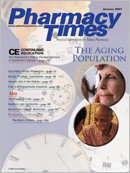Publication
Article
Pharmacy Times
compounding HOTLINE
Author(s):
Q
I would like information about handling materialsthat may fall into the "hazardous" category.
A
Although a pharmacist's professional judgment generallyis a reliable guide for handling these materials, the followingreferences may be useful in the decision-making process.
First, US Pharmacopoeia 30 <795> and <797> are essentialguides for nonsterile and aseptic extemporaneous compounding,respectively. Maintaining a file of current Material SafetyData Sheets for each pharmaceutical ingredient and excipientcarried in stock can be accomplished in a variety of ways,including on-line. A certificate of analysis must be obtained foreach specific container or lot of material received.
The Hazard Analysis Critical Control Point system was developedby the National Aeronautics and Space Administration andPillsbury Foods to ensure food safety for the first human spacemissions. It has been applied to the food and pharmaceuticalindustries since 1971. It focuses on problem prevention in criticalareas and can increase cost-effectiveness when used appropriately.Documentation is, of course, central to the process.
The Occupational Safety and Health Administration (OSHA)Web site has much to say about the presence of hazardousmaterials in the workplace. Title 29CFR1910, Subpart Z, especially29CFR1910.1200, is helpful. Remember, for example, thatwhen a container of powder is opened, the "puff" of materialescaping can float throughout the pharmacy. Everyone, includingstaff and customers, can be exposed to it. Usually, the materialis not hazardous (as to 1910.1200). Containment, gowning,gloving, eye protection, and masking or respirator applicationgenerally will reduce exposure levels to OSHA standards. TheWeb site is particularly useful for its definitions of "hazardous"material—not all materials one might ordinarily consider hazardousfall into this area, and the opposite also is true.
A separate compounding area with filtered ventilation andperhaps isolated exhaust can be desirable. Of course, a suitableclean room is required when compounding aseptically.
The American Society of Health-System Pharmacists' andOSHA's technical bulletins and policies complement each other.See, for example, the OSHA bulletin on preventing exposure tohazardous drugs in the workplace at http://www.osha.gov/dts/osta/otm/otm_vi/otm_vi_2.html.
E-mail your compounding questions to[email protected]
Mr. Erickson is director of professional affairs at Gallipot Inc.

Newsletter
Stay informed on drug updates, treatment guidelines, and pharmacy practice trends—subscribe to Pharmacy Times for weekly clinical insights.






